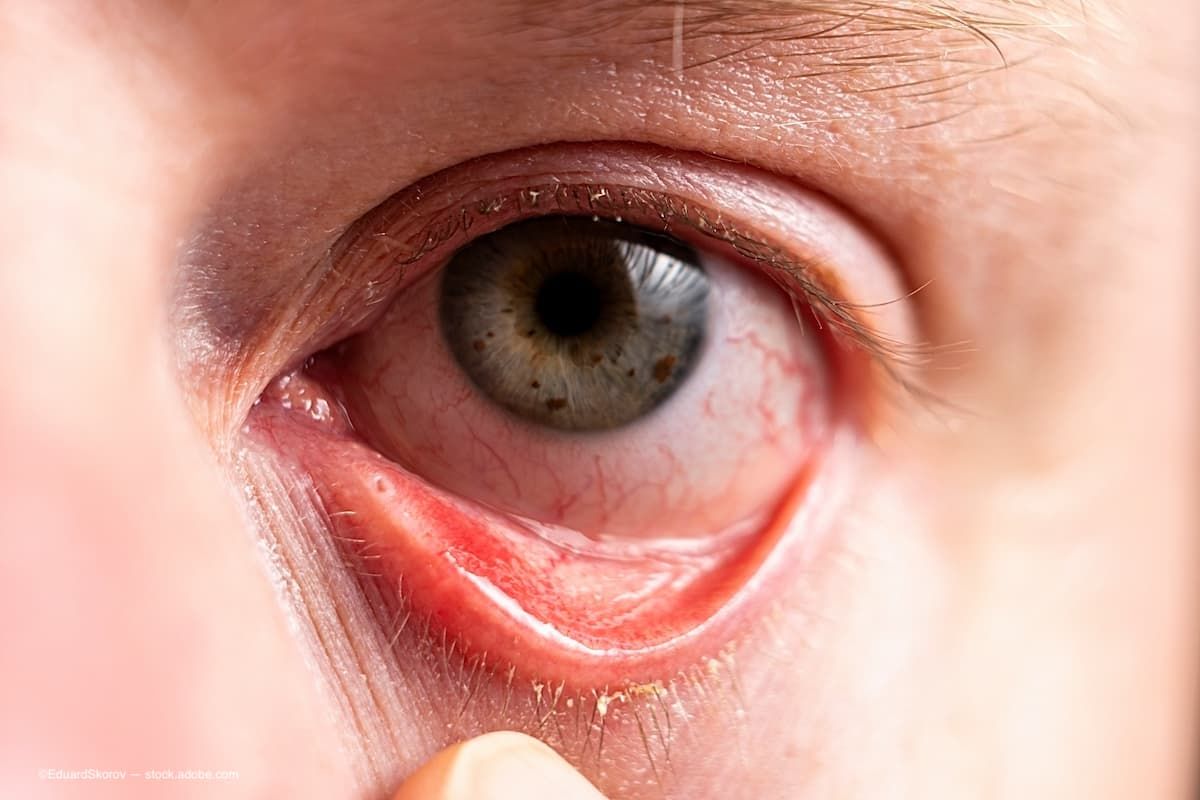Article
BLOG: A rich MGD pipeline
Author(s):
Alice Epitropoulos, MD, gives some insight into meibomian gland dysfunction (MGD), one of the most prevalent forms of dry eye.
MGD is the most prevalent form of dry eye, present in 86% of dry eye cases. (Image Credit: Adobe Stock/EduardSkorov)

We have long known that MGD is the most prevalent form of dry eye, present in 86% of dry eye cases.1 In-office, vectored thermal pulsation (VTP, LipiFlow, Johnson & Johnson Vision) has been FDA-cleared for the treatment of MGD for more than a decade, and remains the most well-studied procedure for MGD. In recent years, several other treatments that apply heat/light therapy and/or pressure to the glands, including intense pulsed laser (IPL), iLux (Alcon), and TearCare (Sight Sciences), have become available.
My expectation is that in the next few years, we are likely to have several more treatments to add to our armamentarium for MGD.
For example, Bausch + Lomb and Novaliq just filed a new drug application (NDA) with the FDA in September for NOV03, a non-aqueous, 100% perfluorohexyloctane drop for the treatment of dry eye associated with MGD. Following positive Phase II results2 topline Phase III data were presented at the 2022 ASCRS and ARVO meetings. Patients who used the drops QID for nearly 2 months had statistically significant improvements in corneal fluorescein staining and eye dryness visual analog score (VAS) compared to controls. Seeing improvements in both signs and symptoms has historically been difficult to achieve in dry eye disease clinical trials, so these are impressive results.
Tarsus Pharmaceuticals has also filed an NDA for its new treatment for Demodex blepharitis, TP-03. The active ingredient, lotilaner ophthalmic solution 0.25%, paralyzes and kills the ectoparasites responsible for Demodex blepharitis. Demodex can complicate MGD, with mites contributing to gland blockage and microstructural changes in the meibomian glands.3 Researchers have published a number of papers showing that TP-03 demonstrates highly statistically significant improvements over control that begin as soon as 2 weeks after initiation of the drug. In the recently published Saturn I Phase 2b/3 pivotal trial, 81% of patients treated with the lotilaner therapy had a clinically meaningful collarette cure and 68% had complete mite eradication after BID treatment for 6 weeks.4 Additionally, 92%of patients rated the drop as neutral to very comfortable. Many patients with both Demodex blepharitis and MGD and would benefit from resolution of both conditions.
A little earlier in the clinical research stage is a Phase II selenium sulfide ointment (AZR-MD-001, Azura Ophthalmics) that helps to reduce keratinization along the lid margin. It is designed to breaks up the bonds between abnormal keratin proteins and slows the production of these proteins, to hopefully prevent future blockages. Keratolytic agents have been used in dermatology to improve penetration of topical medications.
While I don’t expect that any of these will replace the benefits of thermal pulsation, I expect they will nicely complement it, providing better results for our patients who are struggling with MGD and dry eye. For example, I can envision performing VTP to unclog the oil glands and then prescribing NOV03 drops to help rehabilitate the tear film, or perhaps an antiparasitic agent or keratolytic to help keep the glands free of unwanted mites and keratin. We have much to look forward to for the care of our dry eye and MGD patients.
References:
Lemp MA, Crews LA, Bron AJ, et al. Distribution of aqueous-deficient and evaporative dry eye in a clinic-based patient cohort: a retrospective study. Cornea 2012;31(5):472-8.
Tauber J, Wirta DL, Sall K, et al; SEECASE study group. A randomized clinical study (SEECASE) to assess efficacy, safety, and tolerability of NOV03 for treatment of dry eye disease. Cornea 2021;40(9):1132-1140.
Cheng S, Zhang M, Chen H, et al. The correlation between the microstructure of meibomian glands and ocular Demodex infestation.: A retrospective case-control study in a Chinese population. Medicine (Baltimore) 2019;98(19):e15595.
Yeu E, Wirta DL, Karpecki P, et al, Saturn I Study Group. Lotilaner ophthalmic solution, 0.25% for the treatment of demodex blepharitis: Results of a prospective, randomized, vehicle-controlled, double-masked pivotal trial (Saturn-1). Cornea 2022;Online ahead of print.




